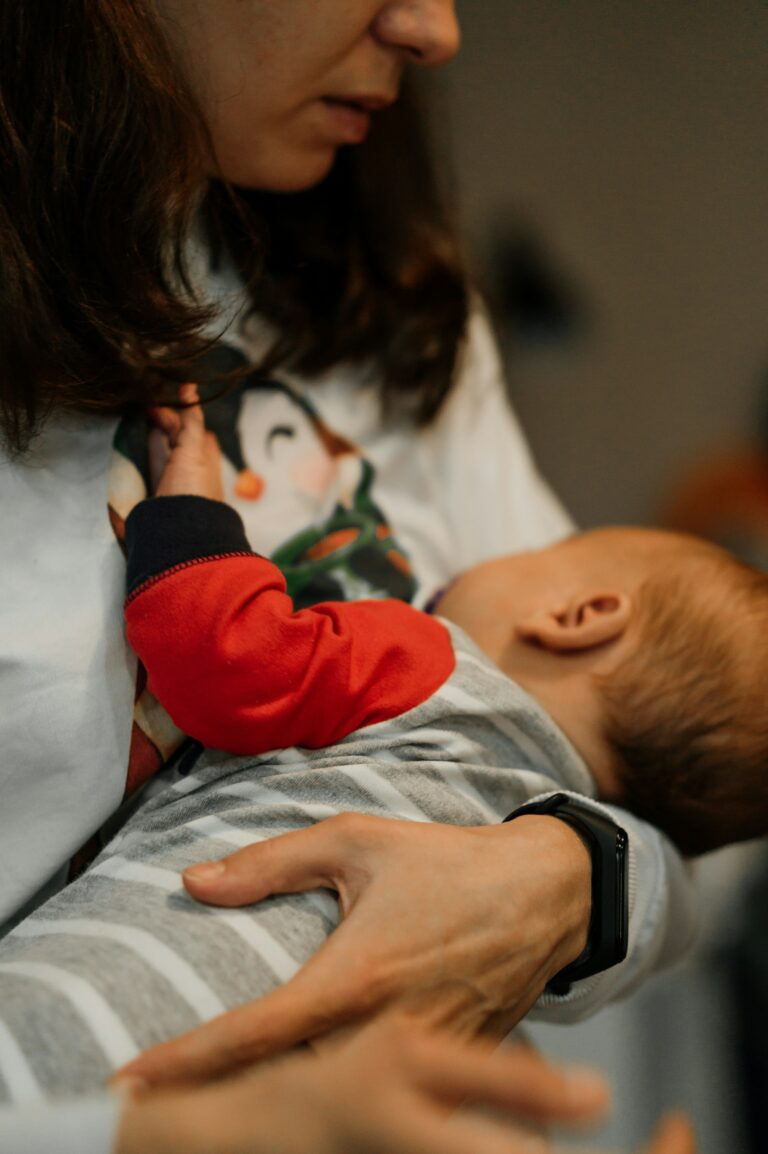Emotional eating weaves itself silently into daily life, slipping behind after-school snacks and hiding under the cheerful chaos of family routines. Parents, ever attuned to their children’s well-being, may notice those moments when food transforms from sustenance into solace. Is your child reaching for cookies in a whirlwind of frustration, or using snacks as a soothing balm against the quiet hum of boredom? These behaviors spark questions—are these hunger signals, or something more intricate? Navigating emotional eating means not only decoding your child’s cues, but also your own. Today, let’s shine a light on the emotional undercurrents that ripple beneath mealtimes. You’ll find answers rooted in science, practical strategies, and reassuring perspectives on how nutritional health, brain chemistry, and everyday emotions intersect at your kitchen table.
Emotional Eating: What Every Parent Should Know
Emotional eating is not simply a matter of appetite; it is a coping mechanism—a response to emotions such as stress, anxiety, sadness, boredom, or even celebration. Unlike physical hunger, which develops gradually and responds to any type of food, emotional hunger often appears suddenly, demands specific comfort foods, and can persist even after fullness. Why does this happen? The human brain releases dopamine, a neurotransmitter linked to pleasure and reward, when we eat palatable foods. For many, especially children, food becomes an easy shortcut to calm nerves or amplify happiness—a self-soothing action deeply embedded in neural pathways.
Some children absorb these habits through family patterns. If “treats” regularly reward good behavior or ease disappointment, food may soon carry emotional symbolism. The difference between emotional eating and a simple snack is often invisible; both adults and children may struggle to spot the boundary.
Why Do People Eat Emotionally? Exploring Triggers and Mechanisms
Feeding isn’t just physiological. From infancy, nutrition is paired with comfort—think of a baby settling contentedly after feeding, emotions soothed and body nourished all at once. As children grow, emotional eating can emerge when intense feelings—anger, loneliness, worry—become difficult to express. Here’s where things get neurobiological: the hypothalamus and reward centers of the brain spring into action, while hormones like cortisol (the “stress hormone”) signal cravings for high-calorie foods.
Certain patterns may reveal themselves:
- Stress eating: turning to food during academic pressure, family conflict, or hectic days.
- Social snacking: using food as a tool to bond, celebrate, or soothe loneliness.
- Habitual responding: associating boredom or screen time with a ‘snack break’, regardless of true hunger.
Even adults, whose childhood coping skills were shaped by past experiences or inherited family practices, may unconsciously reinforce these cycles for the next generation.
Emotional Eating or Eating Disorder? Drawing the Line
Emotional eating is not an eating disorder, but distinguishing the two is important. While binge eating disorder or bulimia involve more severe, persistent patterns (often marked by distress and physical consequences), emotional eating is better viewed as a learned behavioral response. Persistent emotional eating—if it becomes the primary method of handling difficult feelings—can contribute to:
- Guilt or shame after eating
- Secretive snacking or eating alone
- Frequent cravings for high-sugar or high-fat foods
- Unexplained weight changes, mood swings, or rigid food beliefs
Parents may notice signs that invite further discussion. For example, does your child frequently request snacks unrelated to mealtimes? Do negative feelings cluster around eating, like reluctance to join family meals or comments about feeling “bad” after treats? These signs can flag the need for extra support. Clinical tools such as the Emotional Eating Scale or the Children’s Eating Behavior Questionnaire can be helpful, but a trusted pediatrician or mental health professional offers tailored assessment and guidance. Early recognition helps prevent escalation into disordered eating patterns and related health problems.
Family Patterns and Biological Causes: The Roots of Emotional Eating
Dig a little deeper—family traditions, school pressures, advertising, and even holiday rituals all interact with biology to mold eating behaviors. The gut-brain axis (the bi-directional communication between the digestive tract and the brain), plays a powerful part. Hormonal fluctuations, neural reward circuitry, and even impulsivity influence how children (and adults) cope with emotional waves.
Environmental cues—advertisements showing pizza as a reward, the sight of a favorite snack on the counter—amplify cravings. Meanwhile, the cultural role of food in celebration or consolation further strengthens emotional connections. Some children may display “stress fasting” (losing their appetite under pressure), while others veer into overeating.
Self-regulation—a skill that matures over time—can be disrupted if children are taught to ignore bodily signals in favour of external rules (“clean your plate!”) or emotional comforts. Supporting children to recognize body cues, instead of rewarding emotions with food, builds healthier foundations.
The Consequences: How Emotional Eating Impacts Nutrition and Mental Health
While an occasional comfort snack is harmless, frequent emotional eating may nudge children and adults toward:
- Weight gain, particularly when high-calorie, nutrient-poor foods are involved
- Increased risk for chronic illnesses, such as type 2 diabetes and cardiovascular disease
- Micronutrient deficiencies, masking poor intake behind filling but non-nutritive foods
- Emotional repercussions: self-criticism, low self-esteem, and deepening emotional distress
Science shows that persistent emotional eating often travels with symptoms of depression or anxiety. This does not mean emotional eating causes mental health conditions directly, but repeated cycles reinforce negative feelings, creating a feedback loop between mood and food.
Spotting Emotional Eating in Children and Teens
Wondering how to differentiate a harmless craving from emotional eating? Consider these clues:
- Does hunger strike suddenly, and disappear just as quickly after specific foods?
- Is eating linked to boredom, stress, or celebrations—not just routine meals?
- Does your child hide snacks, eat in secret, or express guilt after eating?
- Are snacks requested right after an argument, tough homework, or disappointment?
The distinction between emotional hunger (sudden, intense, focused on particular foods, not resolved by fullness) and physical hunger (gradual, satisfied with any meal, quiets after eating) is foundational.
Try mindful experiments. Suggest your child waits when hunger arises outside regular meal times—perhaps drinking water, doing a quick activity, or rating hunger on a scale. Notice if the urge passes or persists. Journaling food and mood, or simply discussing feelings openly at the dinner table, can illuminate hidden emotional triggers.
Unhealthy Dietary Patterns: Breaking the Cycle
Emotional eating often leads to disrupted mealtime routines. Warning signs may include:
- Skipping meals, followed by evening overeating
- Frequent consumption of high-sugar or ultra-processed snacks
- Eating quickly, alone, or distracted (television, devices)
- Using food as the only comfort during stressful family moments
Ironically, these patterns undermine both nutrition and emotional stability, perpetuating the cycle between discomfort and unhealthy eating. When food serves only to “fill the void,” diverse micronutrients—like iron, zinc, magnesium—often fall short.
Myths and Realities: Willpower, Reward, and Mindfulness
It is tempting to believe that emotional eating signals weak willpower. Medical research, however, highlights a nuanced reality. Reward pathways in the brain (fueled by dopamine) reinforce comfort eating; this is not a flaw, but an evolved response. Furthermore, not only negative emotions but also happiness, celebration, and social bonding can spark emotional eating. Restricting “bad” foods or shaming children about choices rarely improves outcomes. Instead, mindful eating and emotion regulation techniques—pausing to identify feelings, practicing self-compassion, and developing flexible routines—are proven tools for healthy change.
Practical Strategies: Supporting Your Family through Emotional Eating
Awareness is step one. Track patterns using a food and mood journal—write down what, when, and why food is eaten. Open discussions about feelings, without judgment or shame, are essential. Involve the whole family in mindful eating moments: slow down, enjoy textures, and end meals with gratitude instead of criticism.
Offer alternatives when emotion, not hunger, drives the urge to eat. Try:
- Creative outlets: coloring, crafts, music, or reading
- Physical activity: walking, dancing, gentle stretching
- Self-care: warm baths, comforting scents, calm music
- Connection: a family board game or sharing stories
And remember, professional support—from child psychologists, registered dietitians, or pediatricians—can offer personalized tools when emotional eating disrupts well-being.
Key Takeaways
- Emotional eating is a normal, even universal, phenomenon—rooted in neurobiology, family patterns, and learned emotional responses
- Parents serve as influential models, shaping how children associate feelings with food
- Noticing the fine line between emotional and physical hunger empowers children (and adults) to build a healthier relationship with eating
- Both negative and positive emotions—stress, boredom, celebration—can trigger emotional eating, reinforced by the brain’s reward pathways
- Mindful eating, honest conversations, and gentle self-compassion are more effective than restriction or blame
- If distress or health concerns persist, trusted professionals provide nuanced, evidence-based support
- Explore the Heloa app for personalized advice, practical tips, and free health questionnaires for your family
- Above all, emotional awareness and flexible coping strategies can be learned and shared, strengthening your family’s well-being at every age
Questions Parents Ask
How can I help my child if they use food to cope with stress?
Supporting a child who turns to food for comfort can feel overwhelming, mais rassurez-vous, de nombreux parents traversent cette situation. The first step is to acknowledge your child’s feelings with empathy, without judgment. Encourage open conversations about emotions—sometimes, simply asking “How are you feeling?” can provide relief. Try to offer other comforting activities such as drawing, playing together, or going for a walk when you notice they reach for food outside regular meal times. Building small routines for relaxation, like deep breathing or listening to music, helps children discover new ways to handle stress. Every family is unique, so it’s perfectly normal to test different approaches and adapt together.
Are there warning signs that my child’s emotional eating could indicate a deeper issue?
Many children use food to soothe themselves at times, but certains signaux méritent une attention particulière. If you notice your child consistently hiding food, eating in secret, or frequently expressing guilt after eating, il importe de garder un œil bienveillant. Other markers include sudden, intense cravings for specific foods, especially when emotions run high, or a noticeable shift in their eating habits and mood. These patterns do not automatically mean there is a serious problem, mais ils suggèrent qu’il peut être utile d’en discuter avec un professionnel de santé ou un spécialiste du bien-être des enfants. L’écoute et la bienveillance restent vos meilleurs alliés.
Further reading:









